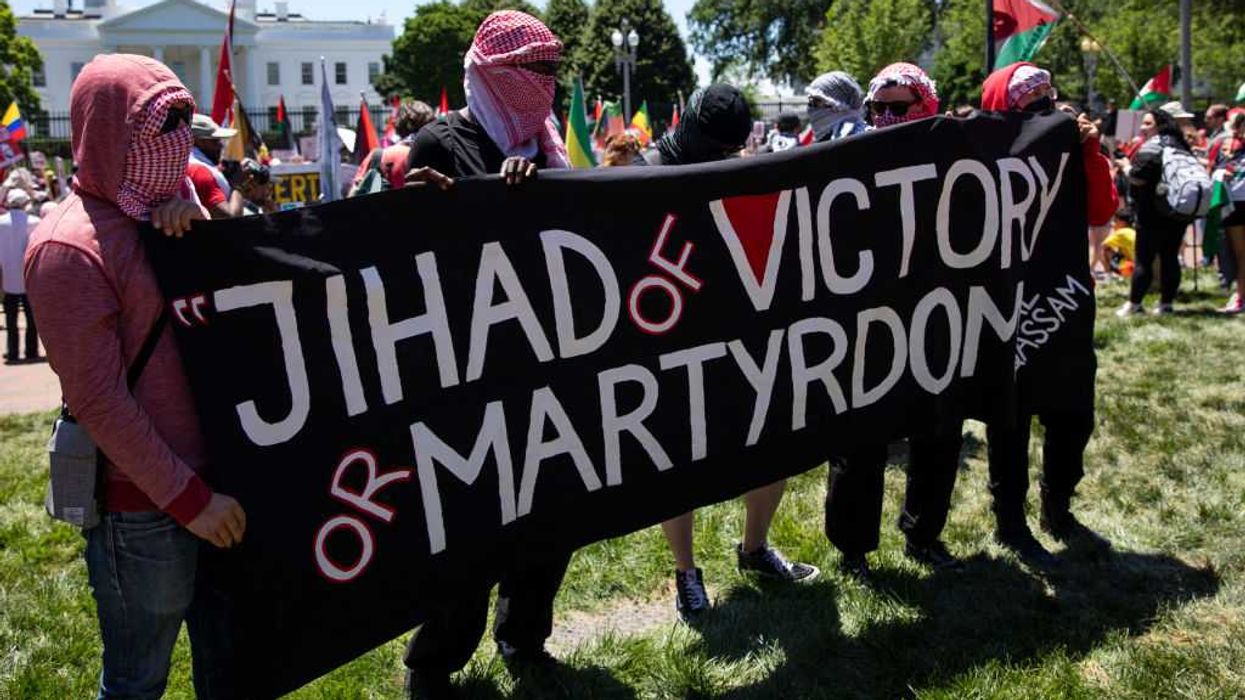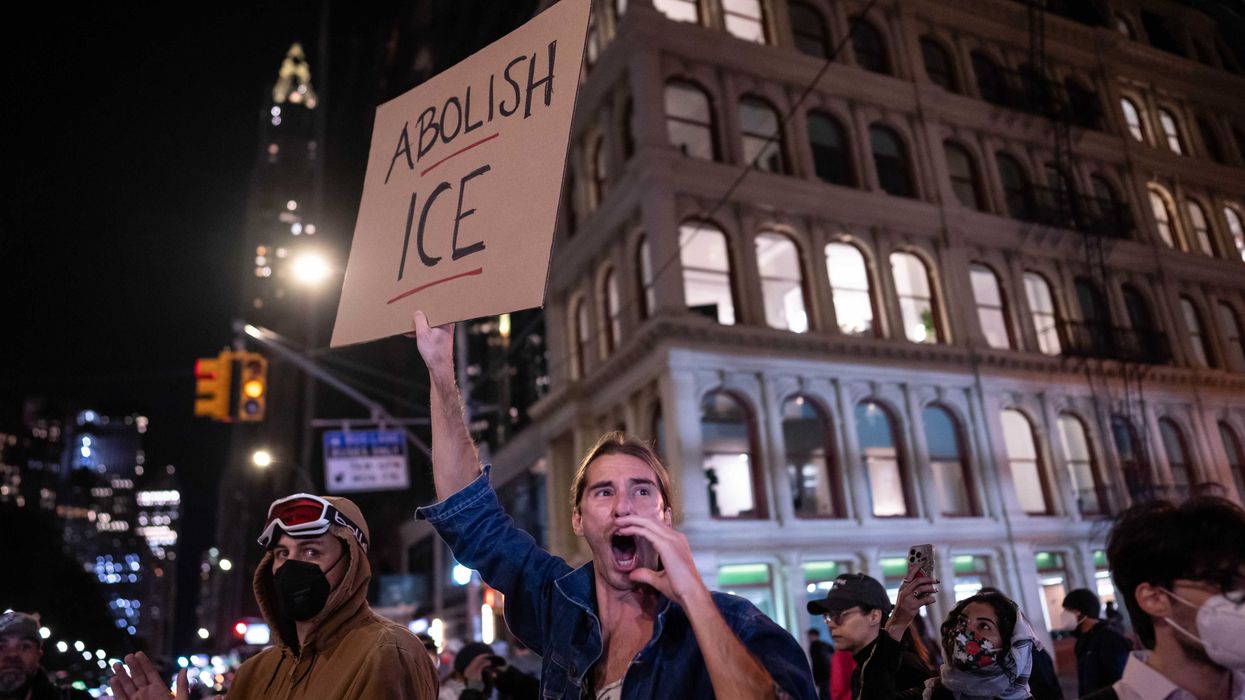by Meg Storm
Ever wonder what goes on behind the scenes at Mercury Radio Arts? Just how do all of Glenn’s crazy ideas get done? Does anyone ever get a chance to sleep? Well, over the next few months we are going to take you inside MRA, giving you the inside scoop on everything from publishing to special events, 1791 to TheBlaze. We will be interviewing members of our New York, Columbus, and Dallas staff, bringing you all the info, so you can know what it’s really like to work for Glenn.
Catch Buck on Real News, weeknights at 6pm ET only on TheBlaze TV. You can listen to The Buck Sexton Show Saturdays at 12pm ET on TheBlaze Radio Network.
Not many people can say they have briefed the president of the United States in the Oval Office. Even fewer people can say they briefed the president of the United States on matters of national security in the Oval Office at 26-years-old. But, during his time in the CIA, that was just another day at the office for TheBlaze’s Buck Sexton.
“I did run Oval Office intelligence briefings for the president on subjects that I had particular expertise in,” Buck said during an interview in TheBlaze newsroom. “That was the president, the vice president, the national security advisor, and the chairman of the joint chiefs of staff, so essentially some of the biggest government national security figures. That was really cool. I think I was 26 the first time I briefed the president.”
Since joining TheBlaze in the summer of 2011, Buck has accumulated quite a few projects. After being hired as National Security Editor of TheBlaze.com, Buck became a regular contributor on TheBlaze TV before joining the Real News panel full-time. More recently, Buck added a three-hour weekly radio show to his repertoire. He hosts The Buck Sexton Show live from the ‘Freedom Hut’ high above Times Square, Saturdays from 12pm to 3pm ET on TheBlaze Radio Network.
So how exactly does one make the jump from working in the Iraq and Afghanistan offices of the CIA to working for TheBlaze? For Buck, it was a bit of a winding road.
“I grew up here in NYC. I was born and raised on the East Side here in town,” Buck explained. “I went to St. David’s, which was a school on the East Side as well. We all had to wear a jacket and tie. It was a fun little place. Then I went to Regis High School.”
It was during his time at Regis, a tuition-free, all-boys Jesuit high school in Manhattan, that Buck began to realize his interest in politics. “Regis was amazing. That was where I first started to realize that I was different from other people in how I view things – in so far as I was more conservative,” he said. “It was not a hostile place for conservatives though. There was a strong Christian ethos behind it.”
While his high school may not have been an unfriendly place for conservative thinkers, his college experience was a little different. Buck attended Amherst College in Massachusetts, and it took just a couple of hours on campus for him to realize what he was in for.
“That was a real wake up call from the very beginning. And when I say, ‘from the very beginning,’ I mean from day one,” he recalled. “At our first events I was hearing all these things I had never really been exposed to before, even though I had grown up in New York. All of a sudden I am being told about white male patriarchy, and Western culture hegemony, and all these kind of pre-packaged ideologies that they just hammer in. I felt under assault from the beginning. I stuck it out though.”
As a right-leaning student on a left-leaning college campus, it is often easiest to just sit back and bite your tongue. But then came the September 11, 2001 terrorist attacks, an event that would prove to shape Buck’s thinking and career.
“All classes were canceled and everyone was kind of walking around in a haze,” Buck said of September 11. “And they held the only all-school assembly that happened while I was there. We gathered in the auditorium. I remember the president [of Amherst], who was kind of a slimy used-car salesman, got up and said something like, ‘We are gathering as a community…’ And then a professor stood up and said, ‘This is what happens when you make people angry.’ And essentially launched into – what I would hear a lot more of – which was that the attacks were a response to U.S. aggressions abroad.”
“I actually stood up and walked out, along with a few of my friends who were, if not conservative, at least sane. After that it was pretty much on,” he continued. “I had thoughts about going to join the military. I had thoughts of leaving Amherst, right after September 11, and serving and then trying to come back and finish my degree at some point.”
Instead, Buck decided to utilize his unique academic background, which included Arabic studies. “For someone who already had some Mid East politics background, who was already studying Arabic at the time, the opportunities were huge,” Buck explained. He spent time at several prominent foreign policy Think Tanks, including the Washington Institute for Near East Policy, the American Enterprise Institute, and Council on Foreign Relations.
Those experiences ultimately groomed Buck for his very first job out of college at the CIA. After graduating Amherst with a Bachelor of Arts, cum laude, Political Science in 2004, “it was a pretty straight shot into the CIA,” Buck said. “The first job I applied for my senior year – the first application I sent out – was the CIA. I got it. It took about a year to get through the clearance process, to get through the background checks and everything else.”
There isn’t a whole lot he can talk about from his four years in the CIA. He was first assigned to the Counterterrorism Center, which he described as the “tip of the spear for anti-Al Qaeda efforts in the intelligence community.” After about a year there, he was moved to the Iraq office for a couple of years before arriving at the Afghanistan office in 2009. Part of the job included spending time in both Iraq and Afghanistan.
“I was in the CIA a little over four years, and it was time to either get an advanced degree or at least figure out what I wanted to do,” Buck said. He ended up back to New York City as a member of the NYPD Intelligence Division, which specializes in counterterrorism work. “I worked at NYPD Intelligence for something like 18 months total,” he said. “During that period, I officially resigned from the CIA because I knew I wasn’t going to go back to D.C.”
If Buck’s time at Amherst served as a philosophical awakening to the tactics of the progressive left, working for the government was a pretty eye-opening lesson in why bigger doesn’t always mean better.
“I have very little faith or trust in the government. I believe in a government that is very simple and straightforward in task, and has the consent of the American people, and is rooted in Constitutional authority. As opposed to, now it is sort of a free-for-all power grab. I think we are much closer to that than people realize,” Buck said. “They are very quiet about it, but there are other quasi-anarchist libertarians running around the federal government. I have some friends who are still on the inside, and they won’t leave because they are well compensated and senior in the ranks now, but they secretly think it is a bloated monstrosity. People have no idea how much goes into it.”
After leaving the NYPD, Buck was accepted to New York University’s Stern School of Business, and he had all intentions of going, until a chance conversation led him to TheBlaze.
Buck was introduced to Betsy Morgan, President and Chief Strategy Officer of TheBlaze, through a mutual friend, and after learning more about his background, Betsy invited Buck to TheBlaze offices for a meeting.
“The first time I showed up in TheBlaze office [in the summer of 2011], there was nothing here. I met with Betsy in some office where all there were two sort of random chairs and a card table,” Buck said laughing. “We had our meeting and she started talking to me. And she basically told me that I should come to work here and not go to business school. I thought about it – I didn’t really want to go to business school.”
“I had always wanted to do conservative media. I was known in the CIA for both being avidly conservative and doing impressions of all the senior CIA officials, which I would do for people. That was nothing new for me,” he continued. “The opportunity for me to come here and do media was cool. It was a risk professionally, for sure, but risk was not something I was averse to before hand. And I am not averse to it now.”
Buck forewent NYU and joined TheBlaze as National Security Editor. From there, he started doing some commentary on GBTV [now TheBlaze TV]. He is now a regular panelist on Real News, which airs weeknights at 6pm ET on TheBlaze. And his gig on Real News led to “me telling the radio people I wanted to do a radio show,” he explained. And that led to the birth of The Buck Sexton Show on TheBlaze Radio Network.
“So now I am doing the radio show, Real News, and I am still national security editor of TheBlaze,” Buck said. “That is pretty much the soup to nuts.”
Media presented Buck with a unique challenge, considering his background in the intelligence community had basically trained him to avoid journalists at all costs. “Not only did I have no TV experience, I was actually trained to avoid journalists like they were radioactive. I was trained to not say anything,” Buck explained. “But at the Agency, we had a lot of training in how to present material, breakdown really complex material so people could digest what you are telling them. That was incredibly helpful for the job, but it was a huge mindset shift. I went from an office where you couldn’t bring your cell phone into the building with you, and to do so was a serious security violation, to an office where there are live video cameras around me and microphones everywhere. Psychologically, it was a pretty big shift.”
It was right around the time Buck really began to settle into his new job on Real News that the opportunity to host a weekly radio program presented itself. “I love hosting the radio show. I really view it as sort of a one-on-one conversation. That is kind of the embodiment of how I think of everybody who is listening. I refer to them affectionately as ‘Team Buck,’” he said. “My approach to the show has always been: I want to do the radio show I would want to listen to.”
Buck has quickly been able to cultivate a relationship with his audience by utilizing the immediate feedback mechanisms radio offers. Aside from the standard practice of taking viewer phone calls, Buck live tweets during his show and that feedback often influences the course of the show. “So when I say it is a conversation with the audience, it really is,” he reiterated. “I have a representative sample of who’s listening and what they want to hear.”
One of the primary differences Buck has noticed between radio and TV is the rhythm. While the Real News panel is “fun” and “lively,” television seldom provides the time to really dig deep into a topic. “In television, I have found that you have to throw punches right away. Not meaning you are going after people, but you have to give your best stuff,” Buck said. “You have to launch in with something that is worthwhile, interesting, moving the conversation, adding to the conversation.”
Radio, on the other hand, allows time to offer an idea but then build and construct a narrative around that hook. “I am somebody who suffers from an excess of analytic thinking, I suppose,” Buck explained. “I kind of bring my best stuff every night on Real News – try to just get out the most interesting thought or question or insight that I can offer at that time. And then, come the radio show, I can go broader or deeper and add all that together and synthesize something that is even more in-depth.”
The benefit of having a weekly show is the ability to really pre-plan the topics for the program in a way a daily show could not. Instead of relying on the news-of-day, Buck spends his week curating the best and most interesting stories he can find. Borrowing a phrase from the CIA, he looks at each program as a ‘deep dive.’
“Every day is prep essentially, as I view it,” he said. “I can really pick the subjects through the week and put together a ‘best of’ the week, which is a huge advantage for someone like me who wants to do a lot of in-depth analysis. I can really craft a three-hour narrative on Saturday. I call it the ‘deep dive’ with folks. It’s actually what we used to call big briefings in the CIA.”
If you are at all familiar with The Buck Sexton Show, you know that its breakout star has been a Soviet-inspired teddy bear. ‘Commie Bear,’ as it is affectionately referred to, adds a dose of jollity to the program. After covering a story on Real News that involved a Swedish advertising company infiltrating Belarusian airspace and dropping ‘Freedom Bears’ – little stuffed animals with messages of freedom written on them – over the country, Buck decided to parody the situation. Little did he know, his “joke story” would turn into an institution.
“That was a real story, and I figured we would do a joke story in response that my contacts in government got me quick access to the Soviet reaction to the ‘Freedom Bear,’ which is ‘Commie Bear,’” Buck said. “And from there, it just kind of took off. I thought it would be a joke segment we would do once or twice, and now it is at the point where, if I go two radio shows without doing it, I start getting a lot of emails from people who are not asking but demanding that they want Commie Bear.”
Buck’s career has taken him to some of the most dangerous places on earth and exposed him to some of the country’s most sensitive intelligence information, but he has settled in quite nicely to his ever-expanding job at TheBlaze.
“I enjoy the media,” he said candidly, “and I think if you can enjoy your job then you picked the right one.”
Catch Buck on Real News, weeknights at 6pm ET only on TheBlaze TV. You can listen to The Buck Sexton Show Saturdays at 12pm ET on TheBlaze Radio Network.


 AASHISH KIPHAYET / Contributor | Getty Images
AASHISH KIPHAYET / Contributor | Getty Images
 Harold M. Lambert / Contributor | Getty Images
Harold M. Lambert / Contributor | Getty Images Adam Gray / Stringer | Getty Images
Adam Gray / Stringer | Getty Images Anadolu / Contributor | Getty Images
Anadolu / Contributor | Getty Images